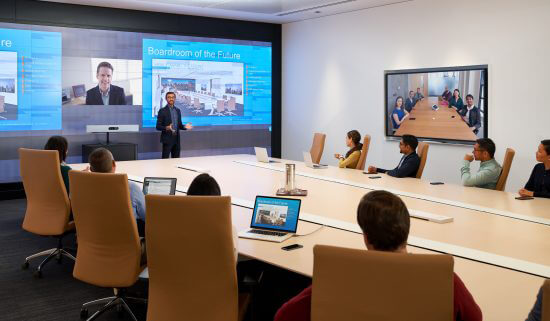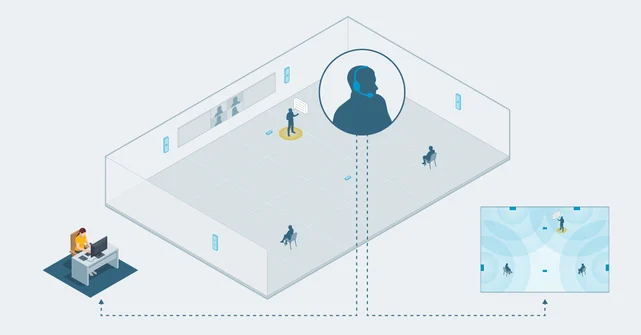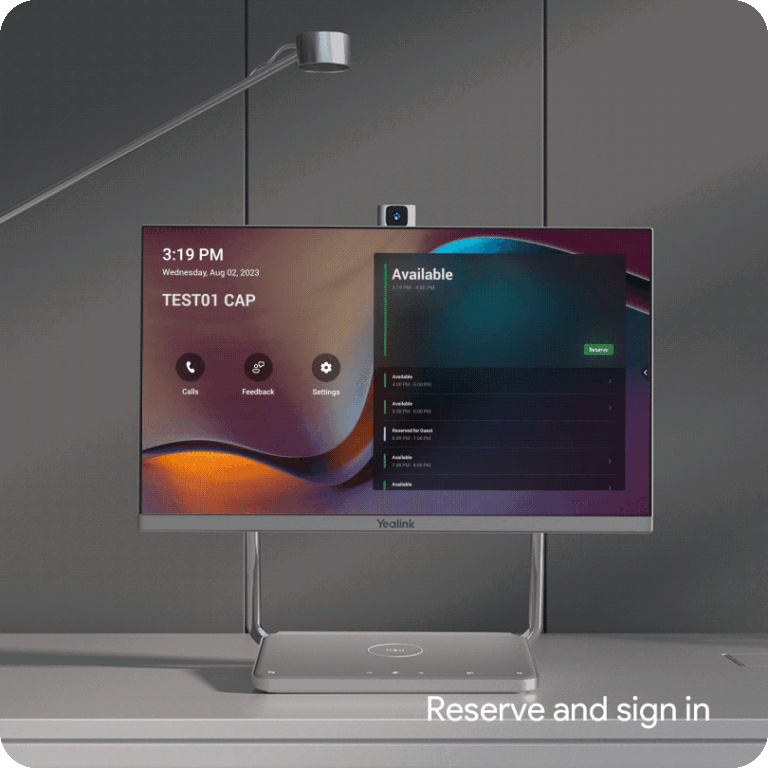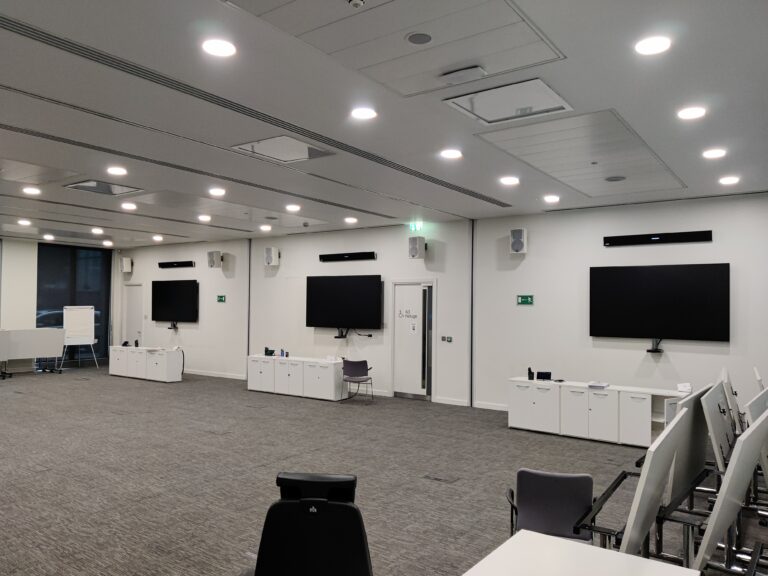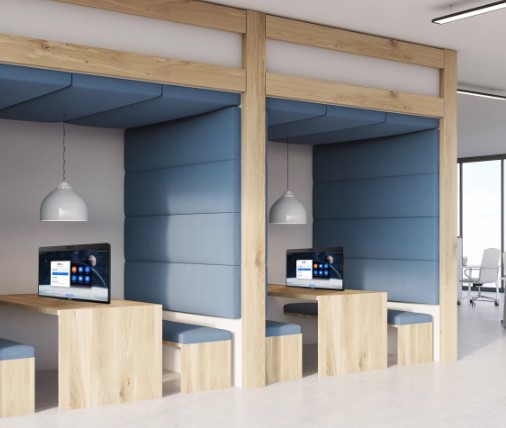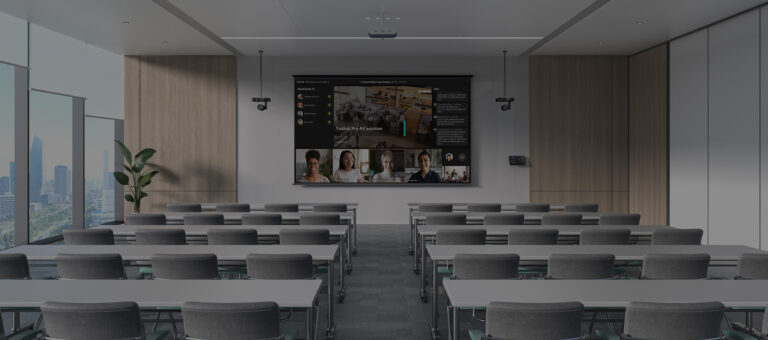In this second blog of the series, we’re going to take a look at the four categories of Video Conferencing services; from the more traditional on-premise conferencing to today’s modern cloud-based services.
If you haven’t already, why not read the first part of this series of blogs, “A Guide to Video Conferencing”, where we look at the importance of evaluating your needs before embarking on what could end up being a costly decision!
Video conferencing services come in many different flavours, but the majority fall into one of these four categories:
Traditional On-Premises Video Conferencing
Heavy on the hardware and hard on the wallet, traditional on-premise Video Conferencing solutions are typically focused on high quality meeting room hardware and require the most support from IT and outside integrators.
The business owns the hardware, and is responsible for it, and therefore is required to manage and maintain the equipment, keep it up-to-date with software, and upgrade the hardware when it comes to the end of its life – often resulting in a large expenditure every few years, especially for video networking equipment in the server room.

On-premise equipment has previously been the only real viable way to access professional quality conferencing facilities in an organisation, but has often been the negative catalyst to the growth of utilisation of video for communications across the world.
Many organisations still use on-premise conferencing equipment, either due to ownership, utilising past investments, or due to strict security policies, however this is fast changing both due to changes in culture and understanding, and availability of other more secure and reliable offerings.
Web Conferencing
Web Conferencing services have traditionally been focused on desktop sharing, file sharing and presentations. However some web conferencing providers offer a video element to their web-based meeting room services too. These types of solutions are usually best for a small group of presenters to share information with a larger audience. Think of it like an upgraded audio conference call that allows the speaker to share their presentation and their face.
Webinars and Webcasts fall into the category of Web Conferencing, and solutions such as On24, WebEx and PowWowNow fall into the Web Conferencing category. Many Video Conferencing solution providers now also offer Web Conferencing facilities within their Video services, such as Lifesize and Zoom.
Meet-Me Video Services
The “meet-me” solution, also known as reservation-less conferencing, varies slightly from web conferencing in that it doesn’t require scheduling. The process for connecting to a meet-me video meeting is very similar to a web conference—dial in to a shared meeting space in the cloud and wait for the moderator to connect and start the call.
The Meet-me Video service category is one that VideoCentric would see as a much more traditional approach of meeting via video, following the same process as calling into an audio bridge. You can’t just call an individual directly.
You “meet in the middle”, and although it doesn’t require scheduling – you dial into a shared meeting space in the cloud and wait for the moderator to connect to start the call – it can only really work for scheduled conferences… no one would know you were waiting there unless you’d told them already!
Cloud Video Conferencing
Cloud Video Conferencing today is generally split into two areas – business class services and free/consumer services.
Business-Class Video Services
Cloud video conferencing is generally the easiest and most efficient solution to deploy and use today.
Although there are a number of cloud based services available – some within the meet-me category – the best cloud-based services offer a call experience that is centred on a shared company directory so users connect by name instead of by dial string.
The server/network equipment is managed by dedicated teams and is usually far more secure and reliable that what could be achieved by a small team on-premise. It must be kept up-to-date (it’s that businesses bread and butter!), is often deployed across multiple locations, often globally, and within highly secure data centres making the service much more robust and resilient, and takes the cost of upgrades, replacements and maintenance away from the business using the technology.
Business class cloud services provide the features needed for successful business collaboration, including high quality video, audio and data, reporting and analytics, administration portals & automatic software updates, recording and centralised management of users & directories.
Free Video Services (and Freemium)
Most free services are built as consumer products, designed to be good enough for individuals chatting to friends and family. Usually they are ad supported or they come with limited features, and to gain access to features needed for business conferencing, you’ll then be required to pay. Free services give you all of the quality and support you would expect from a free service.
The biggest downside to a free service is the lack of security and service-level agreements, alongside low levels of expert support and the additional features provided around conferencing and centralised management.
Narrowing Down…
Now you’ve got some understanding of the range of services and solutions available, it’ll be far more simple to narrow down the options and solutions to choose from, and make the right decision when it comes to your deployment and investment.
Our next blog in our “Guide to Video Conferencing” will look at ideas for utilising video across different departments that you may not have currently considered.
Why not get in touch with our team today to discuss your needs, or let us talk through with you to help you work them out. Have a no-pressure chat with our lovely team on 0118 214 2300.
Already Evaluated?
However if you’ve already evaluated your needs and want to take the evaluation to the next stage, why not try out a free trial of one of our most used Video Conferencing solutions from Lifesize? We can give you a 2 week trial of the cloud here, but if you give us a call, we can arrange for a pair of Video Conferencing systems to get to your HQ and office locations, for you to trial at the same time, to really see how the solution could work for you.


